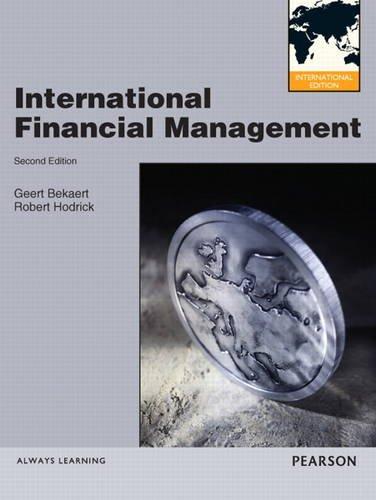Question
Portfolio Rebalancing Assignment A passive investment plan advocates to buy, hold and periodically rebalance a portfolio. Rebalancing is a risk management tool that means that
Portfolio Rebalancing Assignment
A passive investment plan advocates to buy, hold and periodically rebalance a portfolio. Rebalancing is a risk management tool that means that at times an investor must sell winners and buy more losers.
In this assignment, you will see the impact of letting a portfolio ride without periodically rebalancing back to the desired asset allocation. You will first determine what the ending balances are for each component of a portfolio that starts with 50% of the portfolio in a stock fund and 50% in a bond fund. The annual returns for each of the funds is provided. These returns determine what the ending balance in fund are from year to year. If funds are allowed to ride without rebalancing. Each fund will grow by the amount of the return for that fund in a year.
You will also examine what balances will be in each fund if the two funds are shifted back to having a 50-50 allocation. The next years balance for each fund will be the rebalanced amount increased by the return for each fund. The portfolio will again be rebalanced back to the 50-50 allocation. There are three ways to rebalance a portfolio 1. Sell the overrepresented part of the portfolio to buy the underrepresented part of the portfolio, 2. Add enough money to get the portfolio back to 50-50 (this is the most tax efficient way to rebalance), 3. Do a combination of the two. Assume that the overrepresented asset in the portfolio is sold so that an investor can buy more of the underrepresented asset.
The final step is to do an additional three years of returns to see the impact of rebalancing when stocks are no longer increasing in value.
Requirements:
Start the exercise with a portfolio made up of $50,000 in stocks and $50,000 in bonds.
- Use the posted spreadsheet to calculate ending balances given annual returns for the S&P 500 and the bond index.
- Do not change the proportion in each when not rebalancing, that is, assume the balance is allowed to stay at the amount accumulated in each fund from year-to-year.
- Assume that one asset is sold and the other is purchased to get back to a 50-50 allocation each year in the with rebalancing portion of the spreadsheet. Show your work for how much to sell, how much to buy and what the new balance in each fund will be after rebalancing at the end of each year. This is the balance to begin the next year for computing the balance at the end of a year using that years return for each fund.
- Enter the balance in each fund at the end of the 5-year period. Show what proportion is in each fund.
- Without rebalancing
- With rebalancing
- Go through the same steps as in step 1 for the next three years of returns for the S&P 500 and the bond fund. Show what proportion is in each of the stock and bond funds
- Without rebalancing
- With rebalancing
- Comment on whether the account with or without rebalancing has the higher portfolio value after the entire 8-year period.
Step by Step Solution
There are 3 Steps involved in it
Step: 1

Get Instant Access to Expert-Tailored Solutions
See step-by-step solutions with expert insights and AI powered tools for academic success
Step: 2

Step: 3

Ace Your Homework with AI
Get the answers you need in no time with our AI-driven, step-by-step assistance
Get Started


